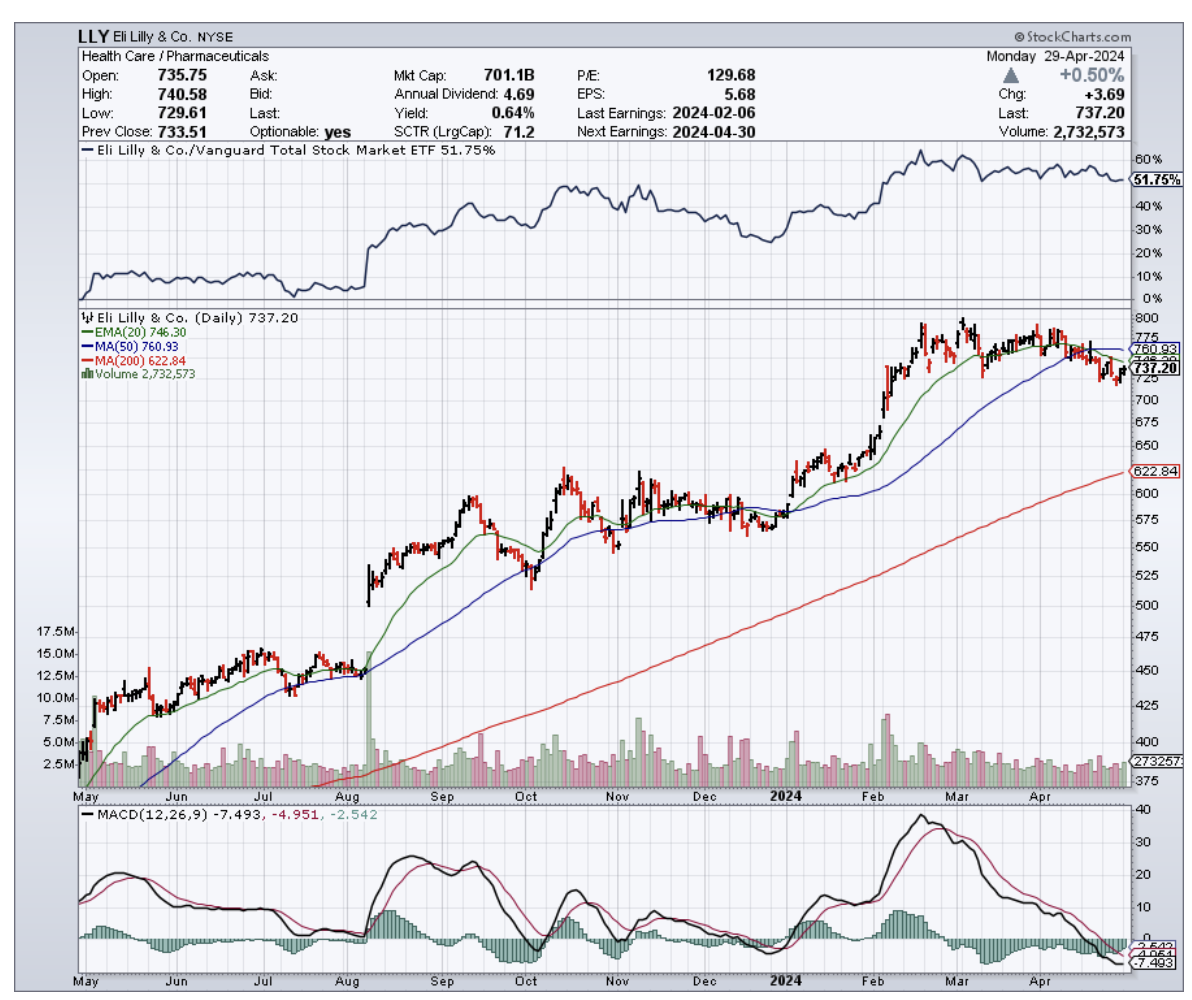You know that feeling when you find a crumpled $20 bill in an old jacket? That’s a little like what Eli Lilly must be feeling with tirzepatide, only replace that $20 with a cool $34 billion forecast by 2029. Yeah, it’s been that kind of party over at Lilly.
Tirzepatide, the magic ingredient in both Zepbound for weight loss and Mounjaro for diabetes, is turning heads—and not just because it’s raking in the cash. This drug is proving to be a one-stop-shop for boosting Lilly’s bottom line and shaking up the market.
Since Zepbound’s launch in November 2022, Lilly’s stock has been on a tear, skyrocketing from $349.95 to a whopping $733.51.
That’s a gain of over 109%. It’s like Eli Lilly has turned into the Usain Bolt of the biotech and pharma sector, sprinting past the S&P 500 and its pharma peers without breaking a sweat.
Actually, Lilly's got a double-whammy against the competition. Not only does Tirzepatide keep raking in successful studies, but it's also got a sweet price point.
We're talking about Zepbound being a good 20% cheaper than Novo Nordisk's (NVO) big hitter, semaglutide.
Essentially, patients get the same results, but a lot less strain on their wallet. This combination easily gives Lilly a serious edge in the diabetes and obesity drug battle.
But wait, there’s a hiccup. Despite the blockbuster status of Zepbound, there’s a bit of a snag recently with this drug—supply can’t keep up with demand.
It makes you wonder whether this is a classic case of "too much of a good thing," right?
This shortage has even made the US Food and Drug Administration limited availability list. But fear not, Lilly’s got plans to boost production with a new facility in Concord, North Carolina by year-end.
Still, this supply problem didn’t stop Lilly from coming up with tirzepatide’s latest party trick: tackling obstructive sleep apnea (OSA).
Basically, OSA disrupts your sleep by making your throat muscles a bit too enthusiastic at night. They tighten up and block your airway, leaving you gasping for air (not exactly the recipe for restful sleep). Untreated OSA can be a serious health hazard, linked to heart problems down the line.
And here's a scary statistic: 80 million adults in the US have sleep apnea, but a whopping 85% of those cases go undiagnosed. That's right, millions are unknowingly battling a condition that disrupts sleep, increases the risk of heart problems, and leaves you feeling like a zombie all day.
Given these figures, it’s not surprising that Lilly’s looking to turn this challenge into the next big opportunity.
In fact, recent studies have shown tirzepatide could reduce those pesky episodes of stopped breathing during sleep by about 30 times an hour compared to a placebo. Talk about a breath of fresh air.
So, how much money will tirzepatide rake in at its peak? Well, it's already approved for diabetes AND obesity, but there's room for even more growth.
To date, Lilly is projected to rake in $25 billion in peak sales for this drug, but with recent developments, even that seems low.
Think about this: Tirzepatide made over $5 billion last year – its first full year on the market.
Then, it snagged the obesity indication in November 2023, now pharmacies can't keep it on the shelves, showing demand is off the charts.
Now, I know you’re wondering if you’ve missed the boat with Lilly’s stock price more than doubling in a blink.
But here’s the kicker: there’s potentially a lot more upside. Beyond tirzepatide, Lilly’s got a full deck with new drugs and a solid dividend that’s been fattening wallets at a rapid clip—up 101.6% in the last five years alone.
So, what’s the bottom line? If you’re looking to park some cash in a stock that has a track record of turning medical breakthroughs into gold, you might want to give Eli Lilly a closer look.
After all, betting on a company that’s leading the charge in medical innovation can sometimes feel like finding that $20 bill—only a lot, lot bigger.

